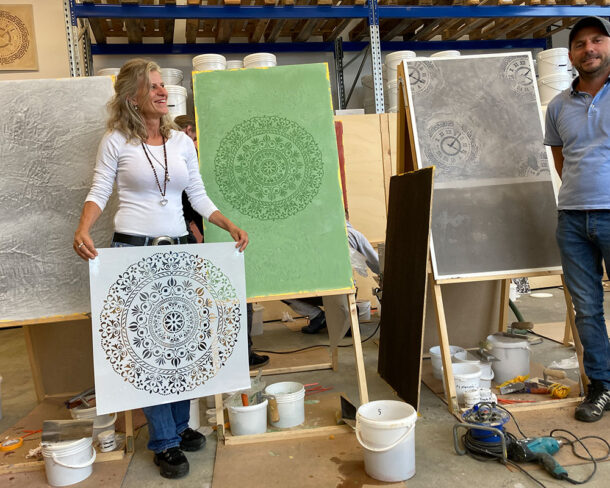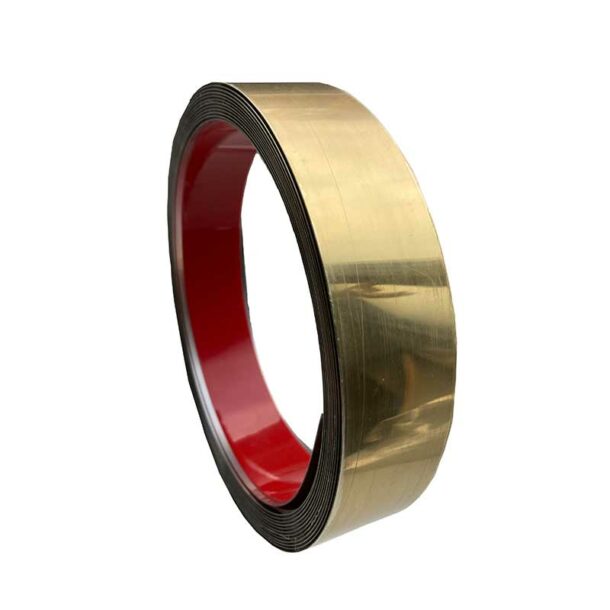Glamour and elegance: gilded hammered metal wall finishing
The world of interior design offers countless possibilities for enhancing a room and giving it a unique character. A little-known but extremely effective technique is gilded hammered metal wall finishing. This method, which was already used in ancient temples and palaces, is experiencing a renaissance in modern residential and commercial premises today. But what exactly is this technique, and how can it best be used?
What is impact metal?
Imitation metal, often also referred to as leaf metal, consists of wafer-thin metal foils that are usually made of an alloy of copper, zinc and aluminium. These imitation gold leafs offer a more cost-effective alternative to real gold leaf, while still creating a comparable visual effect. Imitation metal is available in different colours and is easy to apply to different surfaces. We offer imitation metal in:
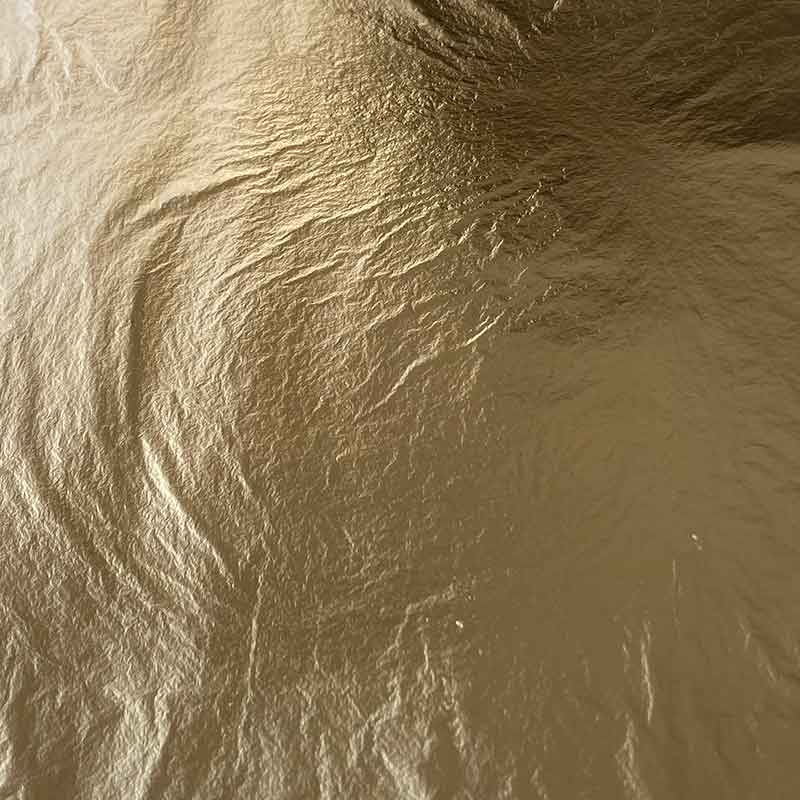
Gold impact metal
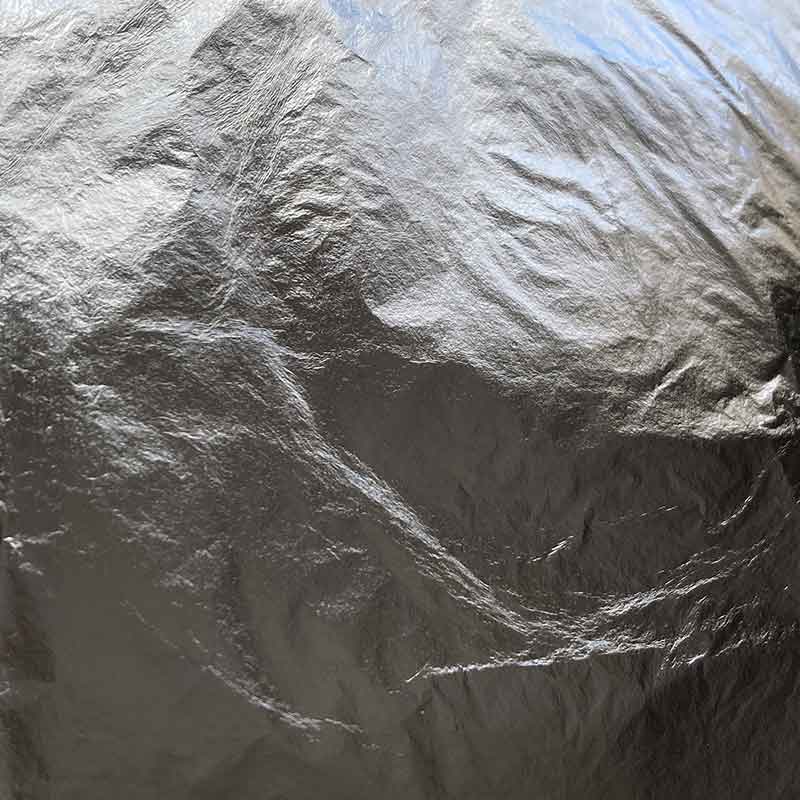
Silver impact metal

Bronze impact metal
The technique of gilding
Gilding a wall with Dutch metal requires precise preparation and careful execution. First, the wall must be thoroughly cleaned and smoothed to ensure that the metal adheres optimally. Then a special bonding milk is applied to fix the Dutch metal. This process requires patience and skill, as the thin metal sheets are very delicate.
Once the adhesive has dried sufficiently, the metal sheets are carefully placed on the wall and pressed into place with a soft brush or cotton glove. Excess material is carefully removed. To ensure the durability of the finish, a protective layer of Punic wax is recommended, or alternatively, varnish or paint.
Possible uses and advantages
The use of impact metal is not limited to walls; furniture, ceilings and other surfaces can also be refined. The technique creates luxurious accents and gives every room a warm, inviting atmosphere that can be both classic and contemporary. Especially in combination with lighting, the impact metal unfolds its full splendour by reflecting light and making the room shine.
One of the main advantages of this finishing method is its versatility. Whether modern, minimalist or baroque, the shiny surface blends seamlessly into a variety of interior styles. Moreover, impact metal is a long-lasting solution that, with proper care, will last for many years.
Conclusion
Wall finishing with gold impact metal is an impressive method of adding elegance and exclusivity to rooms. Although the technique requires some skill, the effort is worth it. With its help, rooms can be transformed into real gems that impress not only visually but also in their impressive craftsmanship. So if you are willing to be creative, gold finishing is an inspiring way to enhance your living or working environment.
What steps are necessary to create such surfaces?
It is necessary to have a smooth surface with a mineral base. This is achieved using an adhesion primer that is pigmented with marble dust. If there is abrasion, however, i.e. a relatively rough surface, then it is smoothed beforehand with creative plaster.
Then comes a layer of Stucco Veneziano, which is coloured in advance in the desired shades. The colour design is usually applied in several layers, with intermediate sanding with P400 and P600 polishing discs is necessary to obtain soft contours. The last layer, that is, the one before the impact metal or gold leaf is applied, is polished with P1000 to P4000 is used.
Depending on the project, the application milk is applied to the polished surface using a brush or foam roller. The thin sheets of imitation metal leaf are now placed on the adhesive with a slight overlap and gently pressed into place either with a soft brush or with the fingers. Once all the sheets are in place, lightly polish them with the brush. This removes any excess material in the direction of the overlaps and smoothes out any wrinkles. After a drying time of 2-3 days, the entire surface can be treated with Punic Wax to protect it and intensify the shine.





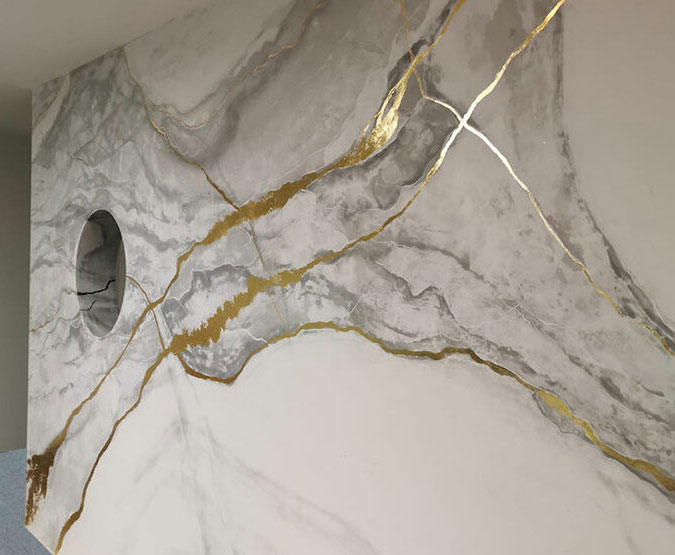
 My name is Stefan Fischer and I am an executive board member of stucco naturale. In this blog you will find useful information and tips on Stucco Veneziano and decorative spatula techniques.
My name is Stefan Fischer and I am an executive board member of stucco naturale. In this blog you will find useful information and tips on Stucco Veneziano and decorative spatula techniques. 